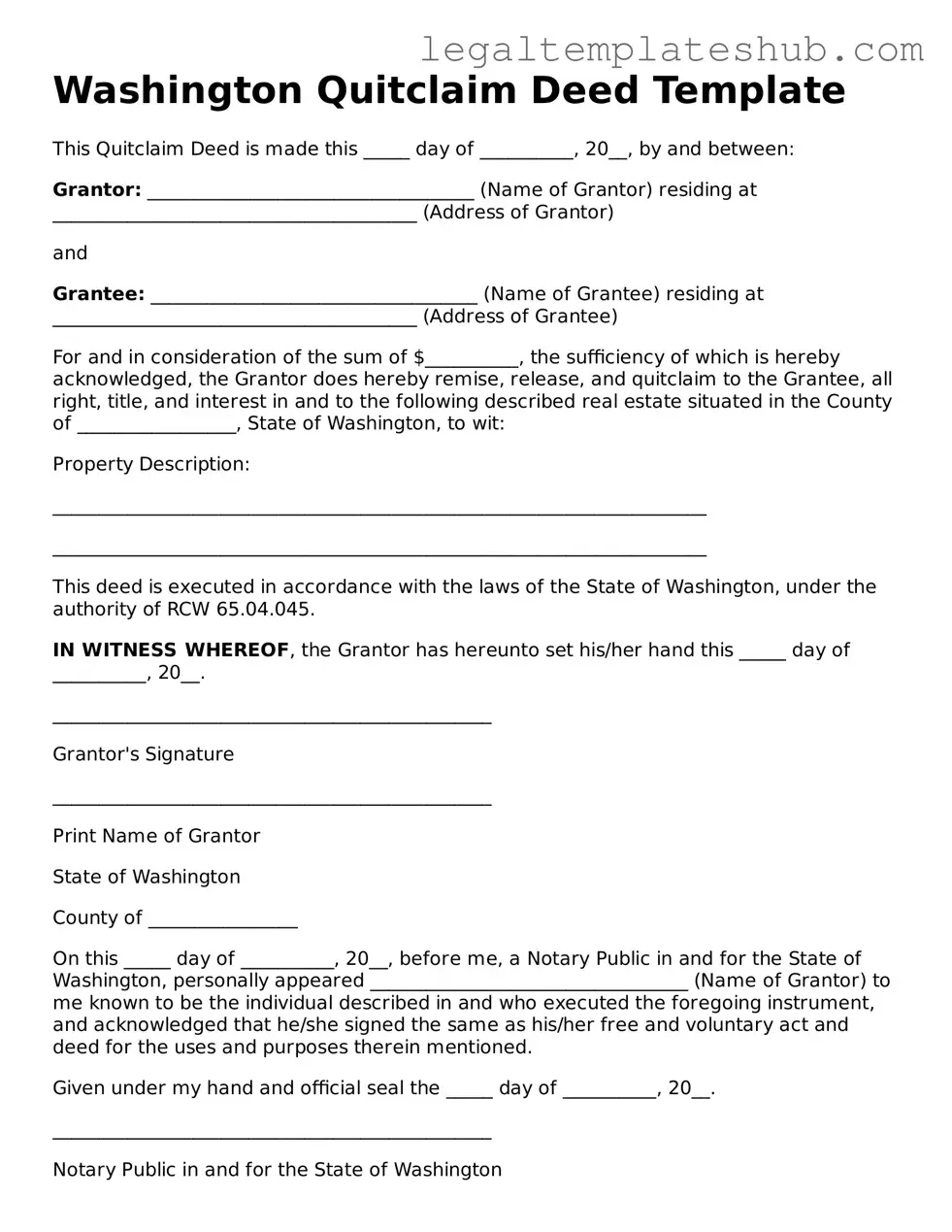Printable Quitclaim Deed Document for Washington
A Washington Quitclaim Deed is a legal document used to transfer ownership of real estate from one party to another without any warranties or guarantees regarding the title. This form is particularly useful when the parties know each other and are comfortable with the risks involved. To get started on your property transfer, fill out the form by clicking the button below.
Access Editor
